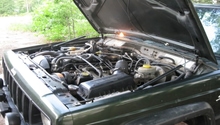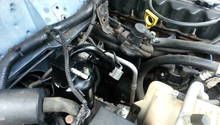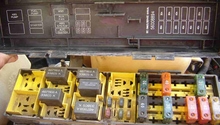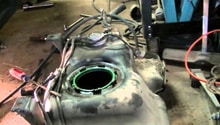Jeep Grand Cherokee 1999-2004: Why Aren't the A/C and Heater Working?
Has your Jeep's A/C or heater given up, leaving you with the most inconvenient drive? This article will help you diagnose and correct these components to get your vents blowing cool or hot air once again.
This article applies to the Jeep Grand Cherokee WJ (1999-2004).
There's nothing worse than being stuck in traffic on a cold winter's day with your Jeep's vents deciding to quit blowing hot air—that is, except for when they quit blowing cool air on a hot summer's day. Whether the HVAC system has suddenly refused to cool you off or warm you up, the root cause of the issue can very likely be coming from the same place. Keep reading, as this article will guide you through the process and help you get the interior of your Jeep Grand Cherokee back to a comfortable temperature.

Materials Needed
- Needle nose pliers
- Multimeter
- Jumper cables
Step 1 – Check the fuses
They might be blown.
The first things to check, and by far the easiest, are the fuses; it is easy to see if they are blown.
- First gain access to the fuse box and remove the cover. It is located under the driver's side lower dash panel.
- Refer to the fuse diagram in Figure 1. The A/C and heater systems are both controlled by fuse F20 (10A).
- Use a pair of needle nose pliers to pull out the fuse.
- Then inspect the metal wire inside of the fuse. If the wire is separated, the fuse is blown and you will have to replace it.

If the fuse connected to the HVAC system is not blown, move on to the following step.
Step 2 – Check the blower motor connector
It may have overheated.
The 1999 to 2004 Grand Cherokees with the automatic zone control system have a common issue with the blower motor connector overheating, resulting in intermittent or complete failure of the blower motor. The harness and the blower motor are located underneath the passenger's side dash and glove box compartment.
- Pull out the connector and inspect it for damage. Refer to Figure 2 for an example of a blower motor connector that has overheated.
- If the connector is damaged, you can order a repair kit directly from Mopar for around $20 (part number: 05102406AA).
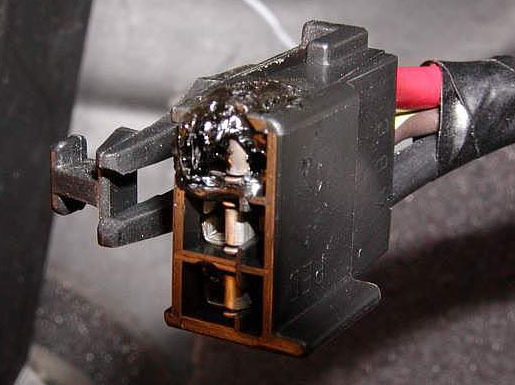
If the blower motor connector is in working condition and not fried, move on to the following step.
Step 3 – Check the blower motor
It may be damaged or faulty.
The blower motor itself is prone to giving out from normal wear and tear.
- Check the blower motor by verifying its power source and ground wire; test it with jumper cables. If it's not working, the blower motor cannot be repaired and must be replaced.
- Also, check the blower motor resistor by disconnecting the negative battery (black) terminal and the wire harness connector on the resistor.
- Use a multimeter to check for continuity between all the terminals of the resistor as well as the output terminal. If the resistor is bad, you will need to replace it.

If the blower motor is in working condition, move on to the following step.
Step 4 – Check for potential leaks
There might not be vacuum pressure.
If your air is only blowing through the defroster and not through the vents, you might have a loss of vacuum pressure caused by a leak.
- Pop the hood and locate the vacuum canister. It is located in the front passenger's side corner of the engine bay (refer to #2 in Figure 4).
- Check the vacuum canister and the vacuum hoses for any leaks, and replace either components as needed. In some cases, the hose has simply disconnected from the canister and just needs to be reconnected.

Related Discussions
- No Air Blowing - CherokeeForum.com
- Grand Cherokee A/C Problem - CherokeeForum.com

